Stoeger's M3000 patterns well, but it's not without flaws. Stephen Maturen
On paper, the Stoeger M3000 seems like the perfect affordable semi-auto duck hunting shotgun. It’s based on a proven inertia-driven platform. It handles and points wonderfully. And it can be yours for under $600, which is less than half the price of high-end, semi-auto duck guns. But sadly, we live in an imperfect world and the Stoeger M3000 is an imperfect shotgun—or at least some of them are.
I have duck hunted with four different Stoeger M3000s and M3500s—the 3½-inch variant—in the last decade. Each one of the 12-gauge inertia-driven auto-loaders delivered killer patterns on puddle ducks and geese during two separate Canadian hunts and on a teal hunt in Texas. I also spent an entire duck season shooting the 3-inch M3000 at home in Illinois. Referred to by some as the “Turkish Benelli” (because they are made in Turkey and fall under the Benelli canopy of brands, along with Franchi, Chapius, and Uberti), Stoegers can function as flawlessly as a more expensive Italian inertia gun, but not all of them do. Out of the four M3000s and M3500s I have hunted with, two performed without a malfunction and two did not.
Stoeger M3000 Specifications and Features
- Gauge: 12
- Action: Semi-auto
- Capacity: 4+1
- Chamber: 3-inch
- Barrel type: Steel, vent rib
- Barrel length: 24-, 26-, 28-inch (tested)
- Chokes: IC, M, XFT
- Front sight: Fiber-optic
- Length: 49 inches
- LOP: 14 3/8 inches
- Trigger pull: 8.15 pounds
- Overall weight: 7.3 pounds
- MSRP: $559
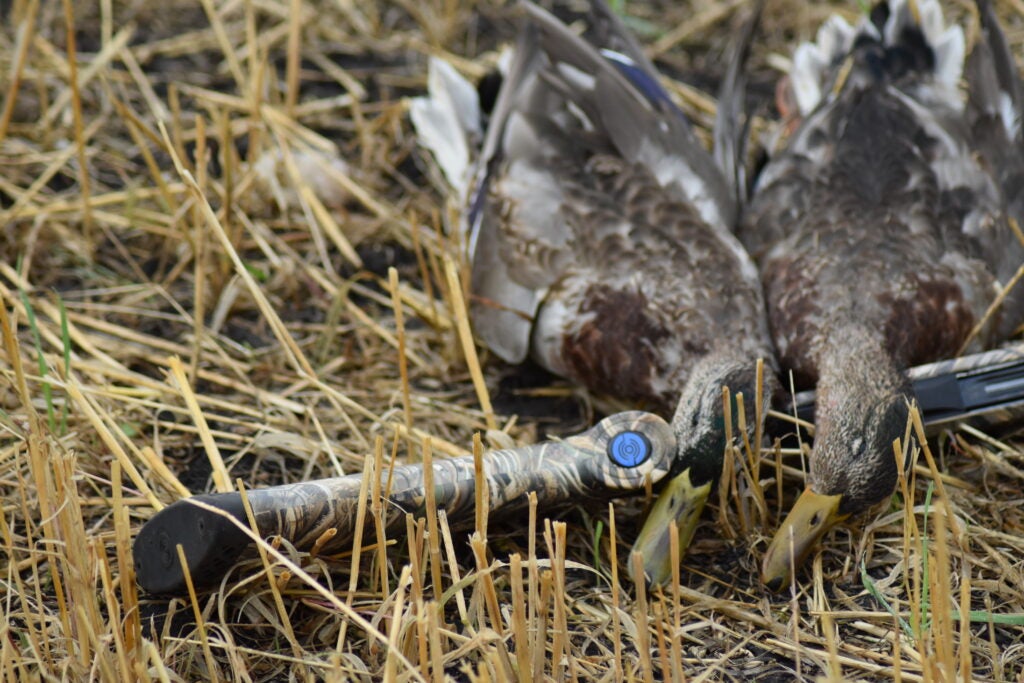
The author has shot four different M3000s and M3500s. Two functioned flawlessly, the other two did not. Joe Genzel
The Stoeger M3000 Action and Functionality
Stoeger semi-autos use the inertia-driven operating system Swede Crister Sjorgren developed in the early 1900s and Italian engineer Bruno Civolani later refined. The simple design includes a two-part bolt with a spring that compresses after the gun is fired and recoil sends the gun backward into your shoulder. Just after that push back occurs, the bolt is released so the shotshell can eject. The bolt then returns forward and collects another shell, placing it into battery. Benelli and Franchi autos utilize the same platform.
The M3000 I hunted all season with in Illinois a couple years back never malfunctioned on me, and neither did another I shot in Manitoba. In fact, they were both workhorses. I abused the gun I used in Illinois badly (on purpose) to see if an inexpensive auto-loader would hold up to getting thrown in the boat and dropped in the water—it did. On a subsequent trip to Canada, a spring in the load gate of my brand new M3500 broke and turned it into a single shot for the remainder of the morning. Also, our test gun in Texas jammed a few times during the last teal hunt (more on this below), plus the pistol grip cap fell off the gun.
It’s important to note that often times, malfunctions are not the shotgun’s fault. One of the common reasons Stoegers malfunction is due to hunters not thoroughly cleaning the gun of the packing grease used to protect them when the guns are shipped from the factory. Stoeger cakes the metal surfaces of their guns in thick grease, and for the M3000 to perform, you must wipe it clean. In Manitoba, some of the other outdoor writers on the trip complained of improper cycling and it was obvious once we field stripped their guns that the packing grease still coated their M3000.
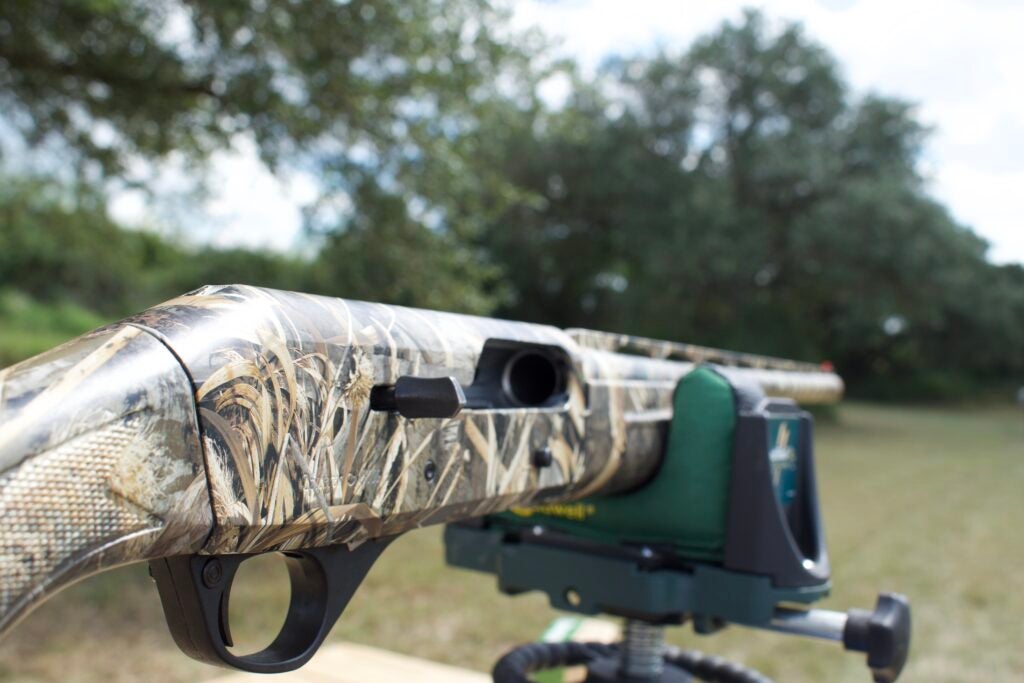
Many duck hunters refer to Stoegers as Turkish Benellis because they are made in Turkey and owned by Benelli. Joe Genzel
Likewise, I’ve seen and shot Turkish guns that don’t operate reliably in cold conditions. Some of that is due to the shooter applying too much gun oil to the action, which will gum it up in frigid temperatures. If you apply a thinner lubricant like Ballistol, the M3000 will run much better. Use Ballistol on the load gate as well. It’s a bit stiff out of the box, and the lubricant will help loosen it up.
However, some M3000s simply don’t cycle shells with the reliability duck hunters require from their waterfowl shotgun. Improper cycling of inertia guns can be caused by shooting shotshells with a low charge weight (Stoeger recommends shooting at least a 1 1/8-ounce charge through the M3000), not mounting the gun properly (inertia guns need your shoulder to recoil against in order to operate), or excess buildup of grime in the action. For their part, Stoeger says that they have not had many complaints about M3000 cycling problems and a low incidence of repair requests for such an issue. They do recommend a break-in period of at least 100 to 200 rounds, which all four of the Stoegers I shot went through, to ensure proper cycling.
I also spoke with a trusted shotgun expert who has worked on Stoegers and other inertia, gas, and break-action shotguns for decades. He noted that Benelli owns and distributes Stoeger guns, but does not manufacture or assemble the guns at their factory in Italy. Additionally, Stoegers are not built with the same quality parts as Benellis, which is one of the reasons why they are far less expensive. Both play a major factor as to why some M3000s have malfunctions, according to the expert.
Like most inertia shotguns, the M3000 has a rotating bolthead. Sometimes with this platform, the bolthead will not completely close when you press the bolt release button. If you don’t notice that the shell is not in battery, you will hear a click—the hammer pushing the firing pin forward—when you pull the trigger, but the gun will not fire. Our test gun had no problems sending shotshells into battery.
Testing the Stoeger M3000
In September 2021, I traveled to Pintail Hunting Club in Garwood, Texas, with three other editors from Field & Stream and Outdoor Life to test 17 of the best duck hunting shotguns. In the mornings, our group of four hunted blue-wing teal followed by rounds of five-stand in the afternoons. Each gun was also pattern-tested (on the same day) inside a 30-inch circle from 35 yards. The industry standard for patterning is 40 yards, but we wanted results from a more realistic duck hunting distance. The guns were shot from a lead sled for best accuracy. Our process was to shoot the gun on paper, find the core of the pattern, and draw a circle around it. That method yields the best percentages and is the proper way to measure a shotgun’s pattern. Weather conditions were steamy, with temperatures in the 90s, humidity near 100 percent, and virtually no wind.
Each tester also tried to make the shotguns fail during our three days of testing. We loaded the guns from odd angles, and shot them from imperfect mounting positions, just like you would in a duck blind, to see if they cycled properly. The guns were also checked meticulously for craftsmanship, reliability, versatility, and overall value.
How the Stoeger M3000 Patterned
We chose a common duck hunting load, Federal’s 12-gauge 3-inch Speed Shok No. 2s with a shot charge of 1 1/8 ounces, and 1,550 fps muzzle velocity. From 35 yards, the Stoeger’s best pattern—through a modified choke—placed 111 of 140 (79 percent) pellets inside the 30-inch circle. This is very solid performance. For reference, the best pattern from our 17 test guns came from the Franchi Affinity 3 and Winchester SX4, both of which put 124 pellets inside the circle. The worst was by the Benelli Nova (93 pellets). From the pattern below, you can see that the Stoeger delivered a traditional 60/40 pattern. There are a few holes below the centerline a duck could slip through, but if you are able to see some of the bird above the barrel when you pull the trigger, the M3000 will deliver a kill shot.
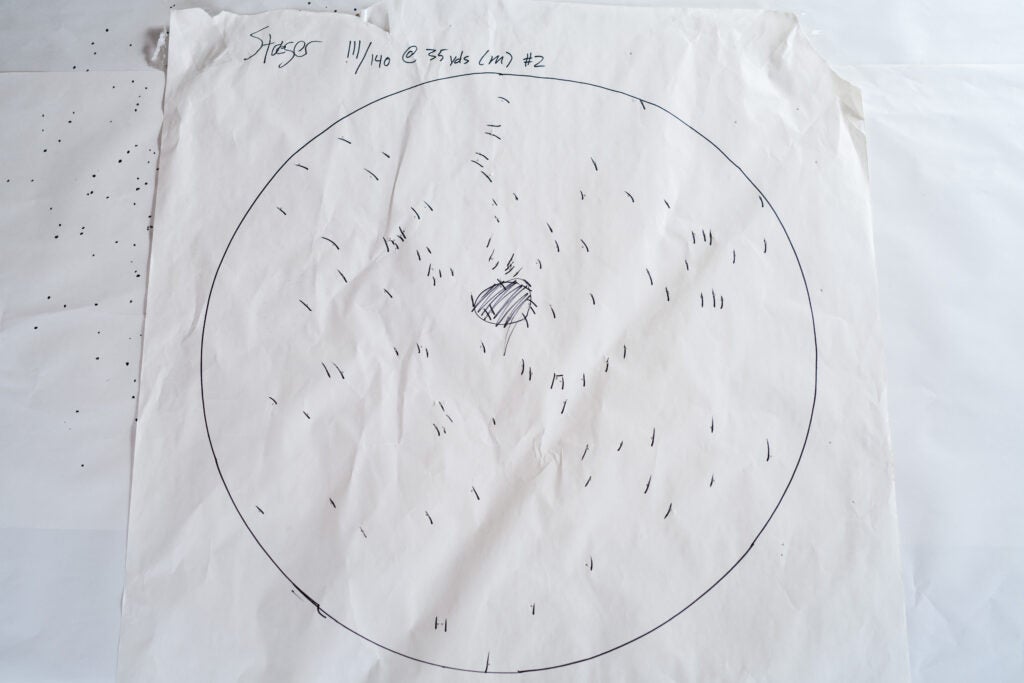
The Stoeger’s best pattern placed 111 of 140 pellets inside the 30-inch circle. Stephen Maturen
Shooting the Stoeger M3000 on Teal and Clays
When it’s running smoothly, the M3000 is one of my favorite price-point inertia shotguns to shoot on ducks. During our last morning in Texas, I hunted with the M3000 and finished the trip with a Scotch double—killing two birds with one shot—when a pair of blue-wing teal bombed the decoys. I also tripled on mallards with this gun during a field hunt in Manitoba a few years ago. Both accomplishments were rare for me. I’m by no means an expert shot. I have flashes of brilliance with shotguns and shoot poorly at times too. However, I can’t recall missing many easy shots with the M3000 in my extensive experience with it.
I was just as accurate with the M3000 on five-stand. If my lead was correct, the clay broke. The M3000 is a little light—just over 7 pounds—for long crossing shots. I like more weight in a gun for shots at extended ranges because it’s easier to keep the barrel swinging through the bird. But when you need to make a snapshot on teal at close range, a lightweight shotgun will serve you well because you can get it moving faster.
Field & Stream shotgun editor Phil Bourjaily, who was also in Texas for the shotgun test, has written about how heavier shotguns are easier to shoot than light ones. He has timed shooters mounting heavy and light guns while shooting clays. The results showed shooters mounted and shot the heavy guns faster (and better) than the light ones in that controlled environment. But Bourjaily has also written that a light shotgun has its place in the field. Upland and turkey hunters walk long distances and don’t want to be bogged down by a hefty gun, so they carry lighter ones. I believe duck hunting is another place where light guns can shine, particularly if you hunt from a layout blind, or shoot small, speedy puddle ducks than only give you short windows to kill them in.
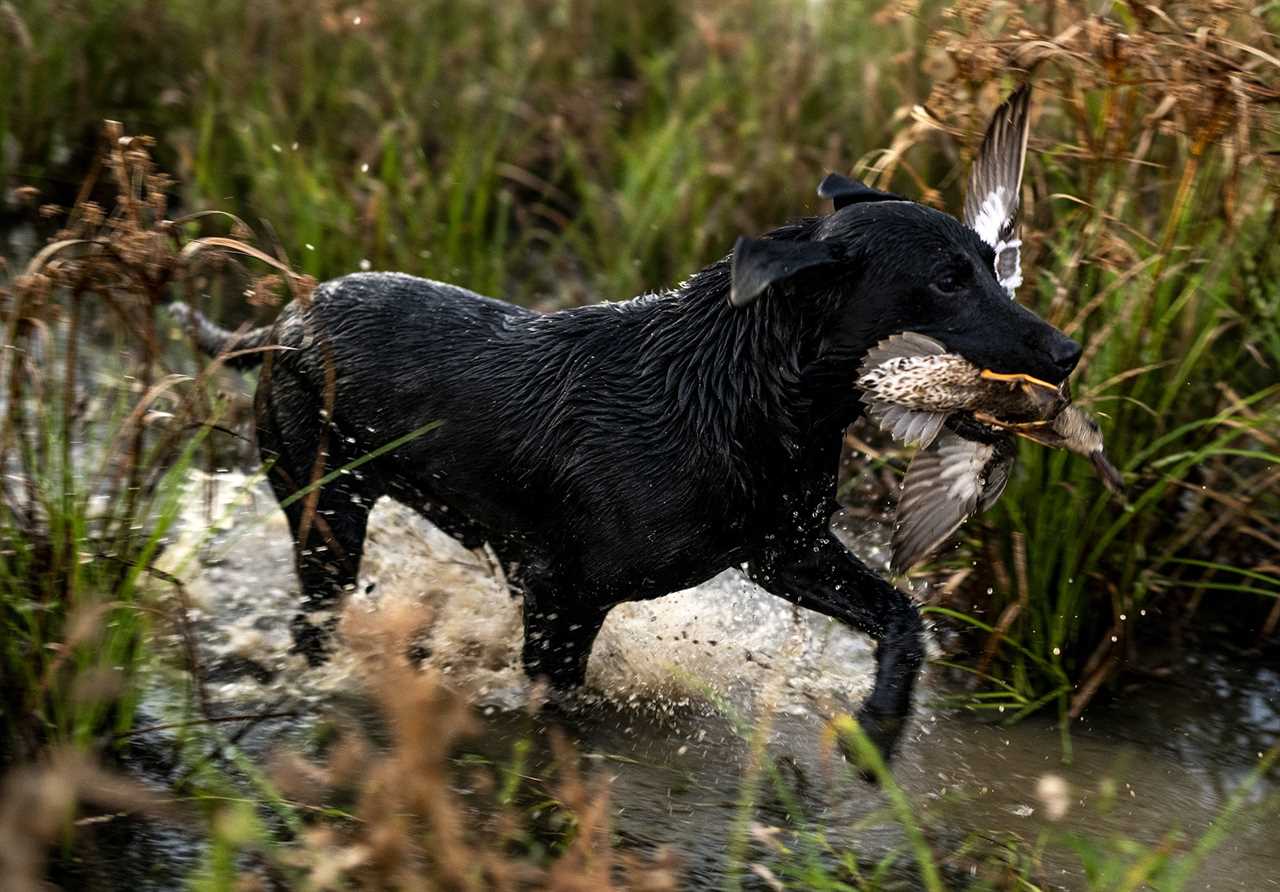
Our guide’s Lab, Biggie, retrieves a teal in Texas. Stephen Maturen
Now, the fit and finish of the M3000 are not great, but you shouldn’t expect these niceties from a $600 shotgun. It’s an inexpensive plastic and steel repeater with light texturing on the pistol grip and fore-end that provides a more secure grip. The recoil pad on the buttstock is not fancy, but it makes recoil much more manageable in the M3000 than the old M2000. The trigger pull of this shotgun is heavy at 8.15 pounds (the shotgun weighs 7.3 pounds). A heavy trigger on a light gun can cause you to pull slightly off target as the trigger breaks. But, when a gun points and shoots this well in the field, trigger weight and finish become irrelevant. I have hunted with plenty of mid-level shotguns with sub-par exterior finishes and stiff triggers that shot the lights during an actual hunt—the M3000 is certainly one of them.
The Stoeger M3000 Is Versatile
No matter how you hunt waterfowl, the M3000 can suit your needs. It’s a great walk-in gun because of its light weight, which also makes it ideal for layout hunts (bringing a heavy gun to your shoulder as you sit up is more difficult and slower). Stoeger makes the M3500 in a snow goose variant that includes a 10-round extended magazine, oversized bolt handle and bolt release, and a distressed white Cerakote finish. You can snow goose hunt with the M3000 as well with an aftermarket mag purchase. The M3000 could also be used for upland hunts, though its overall length of nearly 50 inches (28-inch barrel) would not make it ideal for grouse and woodcock hunts in the timber.
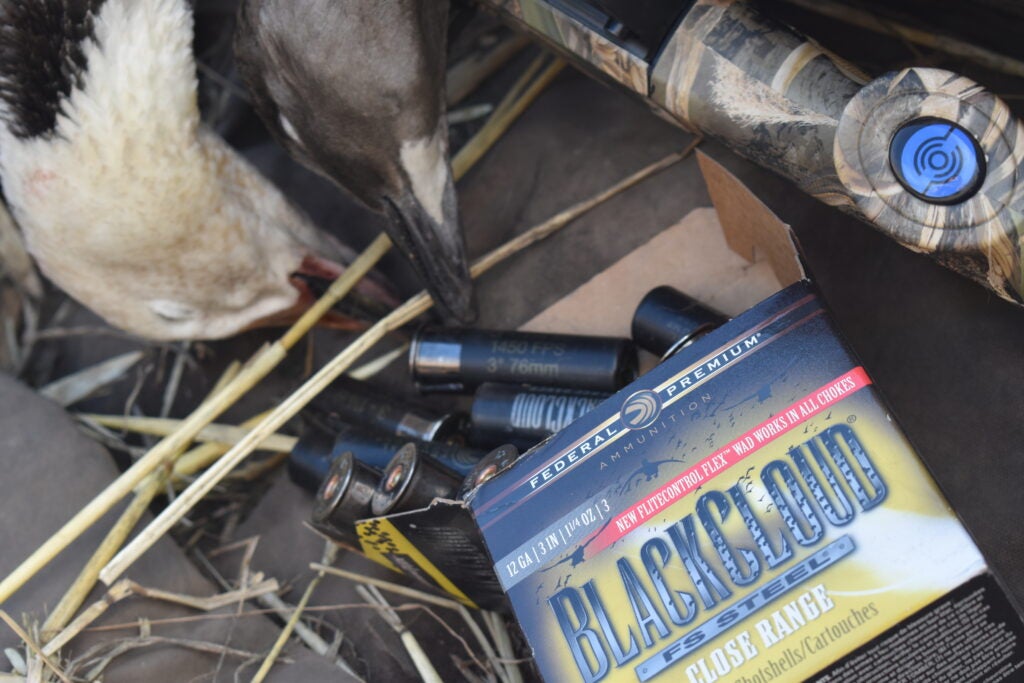
The Stoeger M3000 on a Canadian waterfowl hunt. Joe Genzel
The M3000 is drilled and tapped for an optic, so you can mount a red dot or scope for deer and turkey season. It also comes with an extra full turkey choke (IC and modified are included too). There is an option to add a Steady Grip stock, which has a rubber over-mold pistol grip so you can have better control of the gun while turkey or predator hunting. An aftermarket rubber recoil reducer can be screwed into the buttstock for a softer shooting experience. The M3000 is available in black synthetic, A-Grade Satin Walnut, Mossy Oak Bottomland, and Realtree Max-5. Left-handers are out of luck—the stock safety is not reversible.
Is the Stoeger M3000 Worth the Price?
The M3000 handles and shoots wonderfully, but it has some problems with inconsistent functionality, so you need to take careful consideration. Light, cheap, and accurate, the M3000 has all the makings of an ideal duck hunting shotgun. But I’ve bought a few inexpensive guns that patterned well and didn’t cycle reliably thinking that after a break-in period they would run just fine. Such decisions have mostly ended in disappointment, and I have traded many of those guns in for more reliable ones. So, if you purchase the M3000, be ready for maintenance and always bring a cleaning kit and lubricant to the field (you should do this no matter what gun you shoot)—it can save your hunt.
Final Thoughts
Stoeger is close to making the ultimate affordable, inertia-driven waterfowl gun. From a competitive pricing standpoint, the Franchi Affinity 3 is likely the more reliable option, but it will cost you about $270 more. So if you’re set on going with the M3000, do your best to make sure the one you have your eye on will run without trouble.
The post Stoeger M3000 Shotgun Review appeared first on Outdoor Life.
By: Joe Genzel
Title: Stoeger M3000 Shotgun Review
Sourced From: www.outdoorlife.com/guns/shotgun-review-stoeger-m3000/
Published Date: Tue, 26 Apr 2022 13:24:15 +0000
----------------------------------------------
Did you miss our previous article...
https://manstuffnews.com/weekend-warriors/the-best-camping-dishes-of-2022
 Backyard GrillingWeekend WarriorsAdvice from DadBeard GroomingTV Shows for Guys4x4 Off-Road CarsMens FashionSports NewsAncient Archeology World NewsPrivacy PolicyTerms And Conditions
Backyard GrillingWeekend WarriorsAdvice from DadBeard GroomingTV Shows for Guys4x4 Off-Road CarsMens FashionSports NewsAncient Archeology World NewsPrivacy PolicyTerms And Conditions
